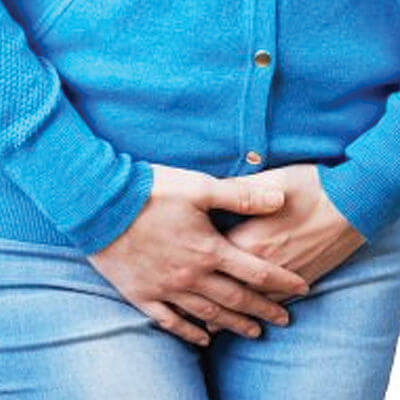
One in five women endures the symptoms of leaky bladder, or urinary incontinence. Yet often, a suffering woman does not acknowledge it as an issue. She may be self-conscious about mentioning the condition to her doctor, or she may assume it’s a normal part of being a woman. Two of the most commonly accepted situations are incontinence after pregnancy and incontinence during exercise.
The truth is, although urinary incontinence is common, it is not considered normal. Needing to urinate frequently, as well as urinary urgency, are signs that one may be dealing with a leaky bladder. Fortunately, for a woman experiencing these symptoms, she can find both surgical and non-surgical options in treatment to minimize or even eliminate these symptoms permanently.
What is Urinary Incontinence?
Weakening of the pelvic floor can affect bladder control and urethra function, causing issues with urination. Women suffering from urinary incontinence find themselves running to the bathroom frequently. Strong urges to use the restroom, even after urinating, is another sign that a woman may be dealing with urinary incontinence. It is important to not brush off the occasional leak experienced while exercising or shifting position, because there are treatments available for women dealing with urinary incontinence.
Types of Urinary Incontinence
One important step in the diagnosis process is identifying the type of urinary incontinence, in order to find the best treatment option.
Stress Incontinence
This type of incontinence occurs when urine leaks out of the bladder during certain strenuous activities. Jogging or other exercising can cause urine leakage. Coughing and laughing can also bring on an unexpected leak. More severe symptoms of stress incontinence may include urine leakage during low stress activities such as changing position or walking. Many pregnant women can experience stress incontinence as the growing uterus puts pressure on their relaxed pelvic floor and the organs shift to make room for baby. Sometimes the symptoms are dismissed as an annoying pregnancy symptom, but if they do not subside after delivery, they may need medical assistance to prevent symptoms from worsening.
Urge Incontinence
Commonly referred to as overactive bladder, or OAB, urge incontinence is a continued sensation of needing to urinate. This sensation is often an overwhelming, powerful urge which sends women dodging for the nearest restroom. Urge incontinence is different from stress incontinence in that it occurs suddenly, without pressure on the bladder from strenuous activity. In addition to strong urges to urinate, women with urge incontinence may find themselves waking up at night to use the restroom, interfering with a full night’s rest. Sometimes, there may be an underlying condition that is causing the undeniable urges to urinate. An honest discussion about symptoms with a doctor can help them determine any underlying conditions so they can better treat you.
Preventing Urinary Incontinence
Many situations can result in urinary incontinence. There are some factors that do make a woman more prone to the condition, including pregnancy and childbirth. Women who want to lessen the chance of experiencing urinary incontinence can follow the advice below:
- Quit smoking – Those who smoke are at a greater risk of developing urinary incontinence.
- Maintain a normal weight – Carrying excess weight can cause more problematic symptoms because of the pressure on the pelvic floor.
- Exercise – Regular exercise improves body function. Exercising the pelvic floor as well can keep symptoms at bay.
- Regular Bowel Movements – Pressure from waste can put unnecessary pressure on the organs of the pelvic floor, so it’s important to maintain regular bowel movements.
Leaky Bladder Remedies
Don’t be ashamed or embarrassed to mention your symptoms to one of our double board-certified FPMRS specialists. Treatment options will be chosen based on the severity of the symptoms but can include:
- Changes to diet and fitness lifestyle
- Physical therapy
- Medications
- Minimally-invasive surgical procedures
- Nonsurgical O-Shot
A nonsurgical, in-office treatment option that can help treat leaky bladder is the O-Shot. Download our free O-Shot eBook to learn more.

Don’t accept urinary incontinence as part of your life. Our double board-certified specialists in urogynecology can help. schedule an appointment today at either our Canton or Woodstock location.


